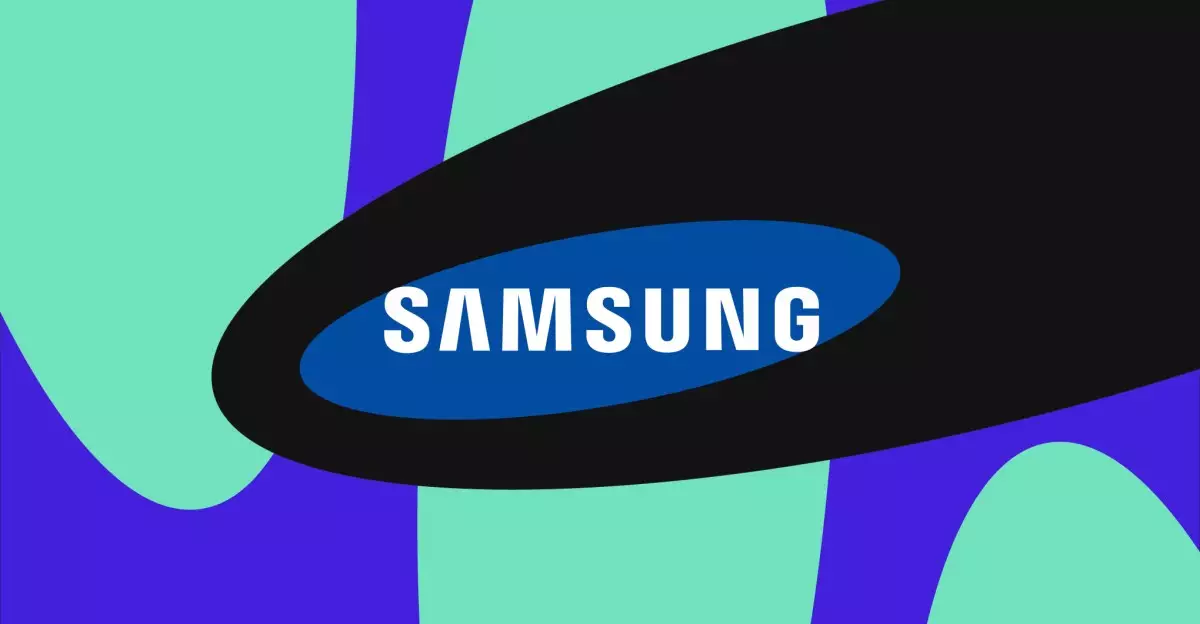As the smartphone market continually evolves, Samsung seems poised to regain competitive ground with the anticipated Galaxy A56. Scheduled for a potential launch in March, this device is expected to rival the much-acclaimed iPhone SE. Given the landscape’s dynamic nature, where midrange phones are gaining more traction, the A56 could be Samsung’s strategic response to Apple’s offerings as well as those from other competitors like Google.
Recent leaks, including enticing spinning GIFs provided by notable leaker Evan Blass, have given the public a sneak peek into the Galaxy A56’s design. The device appears in an array of appealing colors, including silver, pink, black, and a refreshing pale green. One of the most noticeable features is the phone’s flat edges paired with a slightly protruding camera island, designed to house three distinct lenses. The aesthetic aspect is enhanced by a thicker bottom bezel, which provides a unique visual balance. The placement of the power and volume buttons has also seen a shift; they now form a raised island on the device’s edge, moving away from previous designs where the buttons were flush with the body. These choices indicate Samsung’s commitment to refining user experience as well as visual appeal.
While design elements are important, it’s the technical specifications that will ultimately determine the A56’s success in a crowded market. Early insights, including Geekbench scores, suggest that the device may be powered by Samsung’s proprietary Exynos 1580 chipset. This marks a significant evolution for Samsung’s midrange offerings as they fight for performance parity with counterparts in the industry.
Anticipated features for the A56 also include a robust 5,000mAh battery, supporting 45W wired charging capabilities, which represents a leap forward in charging technology. However, this development raises eyebrows, especially considering that Samsung’s flagship Galaxy S25 still operates at a 25W speed. This discrepancy could signal Samsung’s intention to position the A56 as a powerful contender within its range.
Moreover, the camera specifications reveal a familiar yet effective arrangement. The primary rear camera is reportedly a 50MP lens, accompanied by a 12MP ultrawide and a 5MP macro lens. The selfie camera is also seeing an upgrade, shifting to a 12MP sensor, which suggests that Samsung is gearing the A56 to meet the demands of social media enthusiasts who prioritize high-quality image capture.
As the smartphone industry enters an important phase in early 2024, Samsung’s timing appears strategic. With Apple expected to release its next-generation iPhone SE, as well as Google’s midrange Pixel 9a on the horizon, the March launch window could position the Galaxy A56 as an attractive alternative for consumers seeking quality without the premium price tag.
Samsung has a history of releasing its midrange devices in March, aligning with this trend might ensure that it captures the interests of budget-conscious consumers. However, a critical question looms: Will the A56 make its way into the U.S. market? Previous models, including the Galaxy A55, bypassed this lucrative area, yet the strong performance of its predecessor—the Galaxy A54—suggests a missed opportunity for Samsung. To regain meaningful presence in the U.S. market, a successful launch of the A56 could be pivotal.
The anticipation surrounding the Galaxy A56 underscores the growing competition in the midrange smartphone sector. With a combination of appealing design, competitive specifications, and strategic market timing, Samsung may very well have a solid product on its hands. Whether it can effectively carve out its unique space amid the looming releases from Apple and Google will depend on its performance, pricing, and availability in key markets, especially in the United States. As the landscape unfolds, the Galaxy A56 is surely a smartphone to keep a close eye on.


Leave a Reply